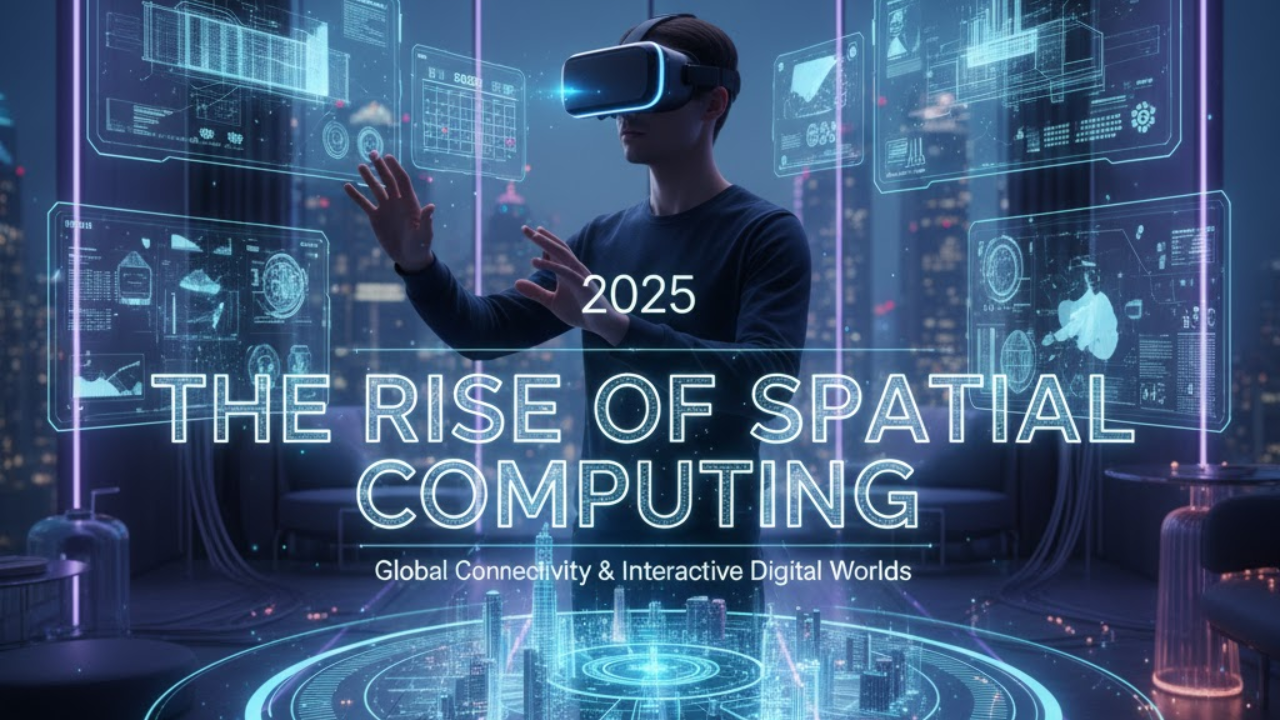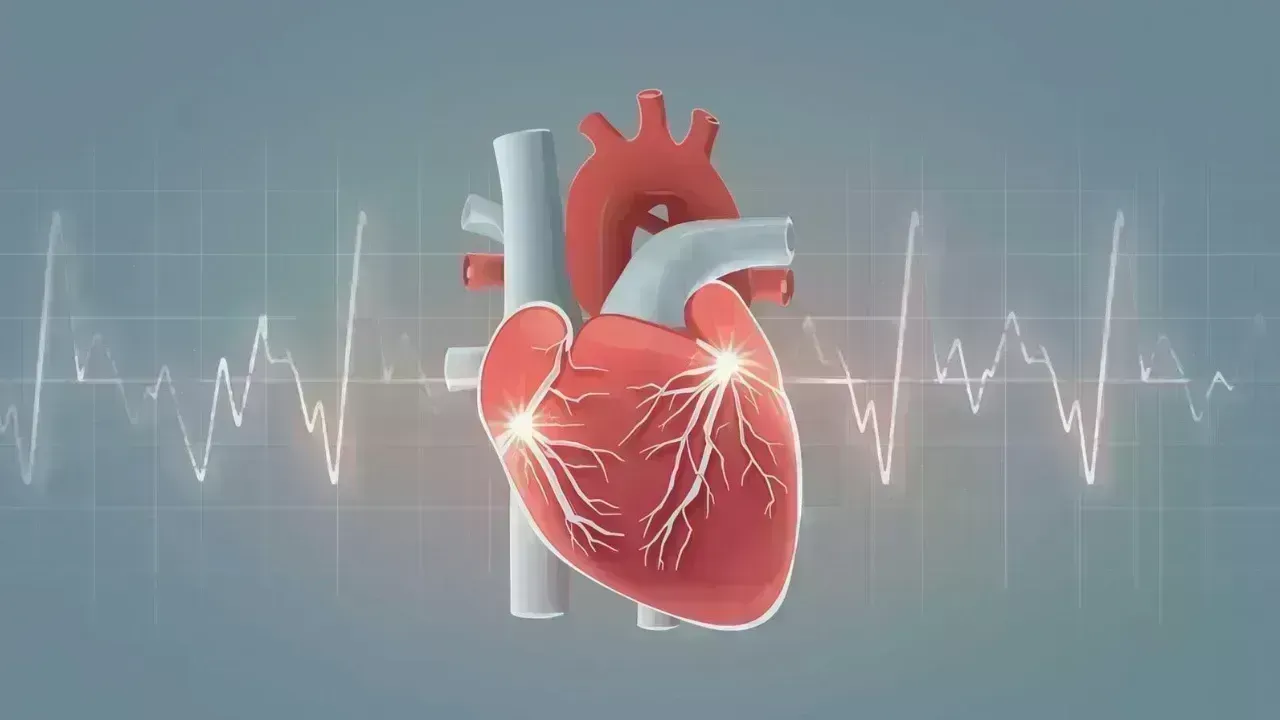
Post by : Naveen Mittal
The future of computing is no longer trapped behind screens — it’s stepping into the physical world. Welcome to the age of spatial computing, where digital content blends seamlessly with your surroundings, creating an immersive, interactive, and intelligent experience.
If the last decade was about smartphones and touchscreens, 2025 is about spatial environments — powered by devices like Apple Vision Pro, Meta Quest 3, and Microsoft HoloLens. These technologies are redefining how we work, learn, shop, and connect.
In simple terms, spatial computing merges the physical and digital worlds using sensors, 3D mapping, artificial intelligence, and augmented reality.
It enables computers to understand space, track movement, and interact naturally with humans. Instead of typing on screens, you can use gestures, gaze, or voice to interact with holographic objects floating in your environment.
Think of it as computing in 3D — your entire space becomes the interface.
Augmented Reality (AR) – overlays digital content on the real world.
Virtual Reality (VR) – immerses users in a fully digital space.
Mixed Reality (MR) – combines both, allowing digital objects to interact with real environments.
AI & Sensors – enable spatial awareness, motion tracking, and object recognition.
Together, these create experiences that are far more immersive than traditional AR or VR — hence, beyond AR/VR.
When Apple unveiled the Vision Pro, it wasn’t just another headset — it was a spatial computing platform.
Instead of calling it “AR” or “VR,” Apple deliberately used “spatial computing” to signal a new era of human-computer interaction.
With its eye tracking, gesture recognition, ultra-high-resolution displays, and AI-driven spatial mapping, Vision Pro allows users to control apps, watch movies, and even FaceTime using spatial avatars.
Search volume for keywords like “Apple Vision Pro features”, “spatial computing 2025”, and “future of AR VR” have skyrocketed globally, proving that curiosity about this tech is at an all-time high.
Spatial computing is revolutionizing remote work. Imagine hosting a meeting where 3D models, dashboards, and participants appear as holograms around you.
Companies like Microsoft, Meta, and Apple are building virtual offices powered by XR (Extended Reality) devices.
Surgeons are using mixed reality headsets for 3D visualizations of organs during surgery. AI-integrated spatial systems assist doctors with real-time insights, improving accuracy and safety.
Students can explore solar systems, human anatomy, or historical monuments — all in 3D. Spatial computing turns learning into an immersive experience that traditional textbooks can’t match.
Brands like IKEA, Nike, and Amazon are using spatial visualization tools that let users preview furniture, clothing, or accessories in their actual environment before buying — driving engagement and sales.
Architects now design buildings with digital twins, where virtual 3D models mirror physical structures. Clients can “walk through” homes or offices before they’re built.
From cinematic storytelling to 3D gaming, spatial computing makes entertainment deeply interactive. The next generation of video games and streaming content will adapt to your real-world environment.
Artificial Intelligence plays a major role in the rise of spatial computing. AI helps devices understand space, motion, context, and intent.
For example:
Computer Vision AI allows devices to recognize objects and people.
Natural Language Processing (NLP) lets users interact with virtual spaces conversationally.
Machine Learning helps spatial systems adapt to user behavior, offering personalized experiences.
In other words, AI turns spatial computing from a visual novelty into a thinking, adaptive ecosystem.
According to MarketsandMarkets, the global spatial computing market is projected to grow from $110 billion in 2024 to over $600 billion by 2030.
The rise of 5G, cloud computing, and edge AI will further accelerate adoption. Spatial computing will likely replace smartphones as the next big human-machine interface — a shift similar to the jump from desktop to mobile.
Despite its promise, spatial computing faces real hurdles:
High device cost – Vision Pro and similar headsets are still too expensive for mass adoption.
Hardware comfort – Long-term wearability and battery life remain issues.
Privacy & Security – Always-on cameras and sensors raise major data protection concerns.
Developer ecosystem – There’s a need for more spatial apps and cross-platform compatibility.
Yet, as technology evolves and prices drop, these barriers will fade — just as they did with smartphones and VR headsets.
Imagine waking up to a holographic personal assistant greeting you in 3D, or visualizing your fitness stats floating in the air as you exercise.
In a few years, spatial computing won’t feel futuristic — it’ll be normal.
Workspaces will be virtual, entertainment will surround us, and the digital layer of reality will blend seamlessly with the physical.
Spatial computing isn’t just the next tech trend — it’s the next platform shift in how humans interact with information.
The line between the real and digital world is disappearing — and spatial computing is the bridge.
As devices like Apple Vision Pro and Meta Quest 3 continue to evolve, they’re transforming how we perceive reality itself. The future of AR, VR, and AI isn’t separate — it’s spatial.
In 2025 and beyond, spatial computing will define the next decade of innovation, connecting technology with human experience like never before.










NBA Friday Recap: Powerhouse Wins for Miami, LA, Milwaukee, and Clippers
Miami, LA Lakers, Milwaukee, and Clippers triumphed in a thrilling NBA Friday, showcasing standout p

Doncic Shines with 49 Points in Lakers' 128-110 Victory over Timberwolves
Luka Doncic dazzles with 49 points as the Lakers secure a 128-110 win against the Timberwolves, show

Kings Triumph Over Jazz 105-104 with Last-Minute Sabonis Effort
The Sacramento Kings edged out the Utah Jazz 105-104, with Domantas Sabonis making the decisive shot

Argentina's Friendly Match Against India Delayed, New Date to be Announced
The friendly match between Argentina and India in Kochi has been postponed due to FIFA approval dela

Rohit and Kohli Conclude ODI Journeys in Australia with a Victory
Rohit Sharma and Virat Kohli bid adieu to Australian ODIs with a final win, forming a 168-run partne

George Russell's Wrestling Mask Antics at Mexican Grand Prix
George Russell donned a wrestling mask to enjoy the Mexican Grand Prix from the stands, providing a